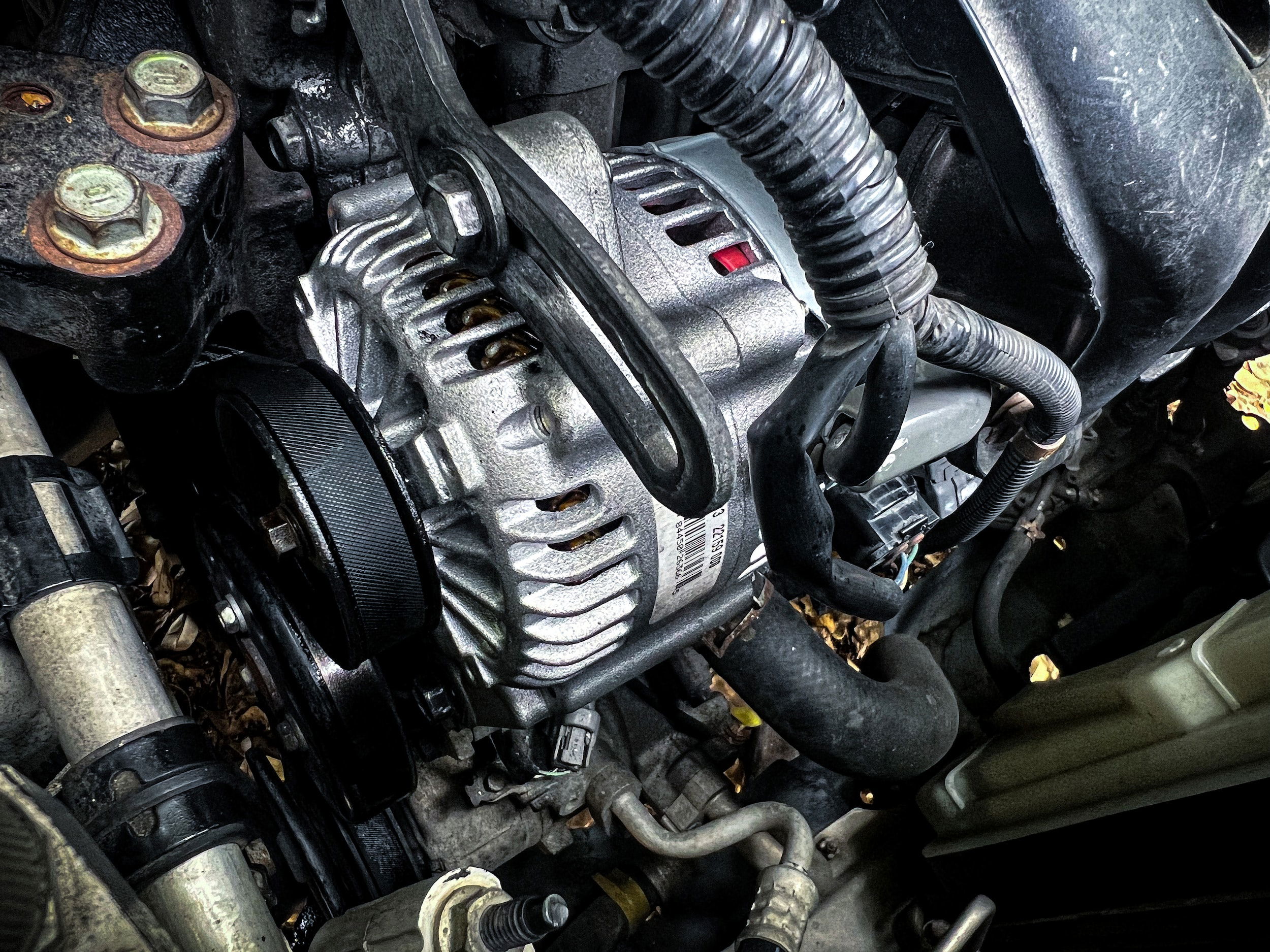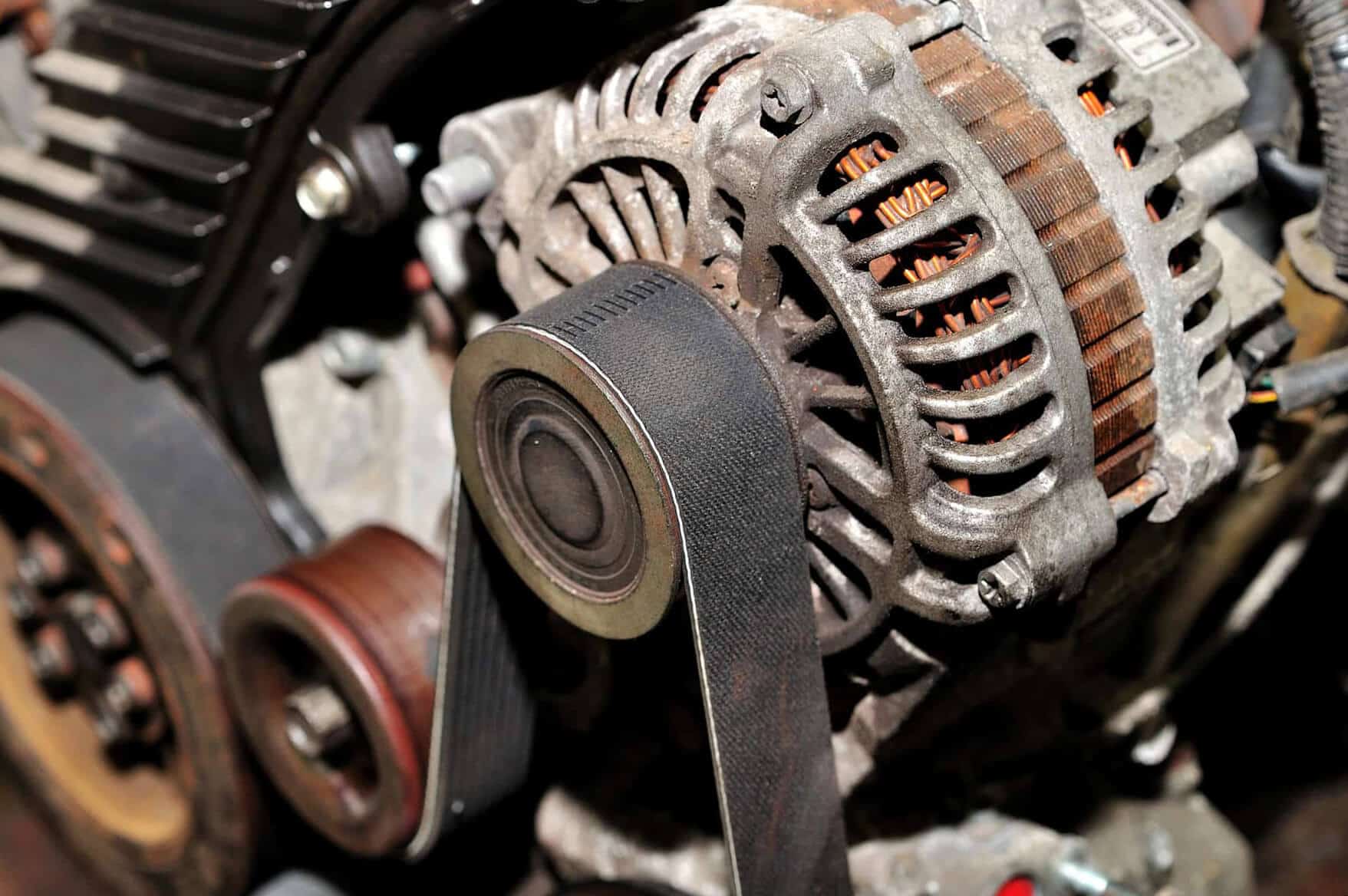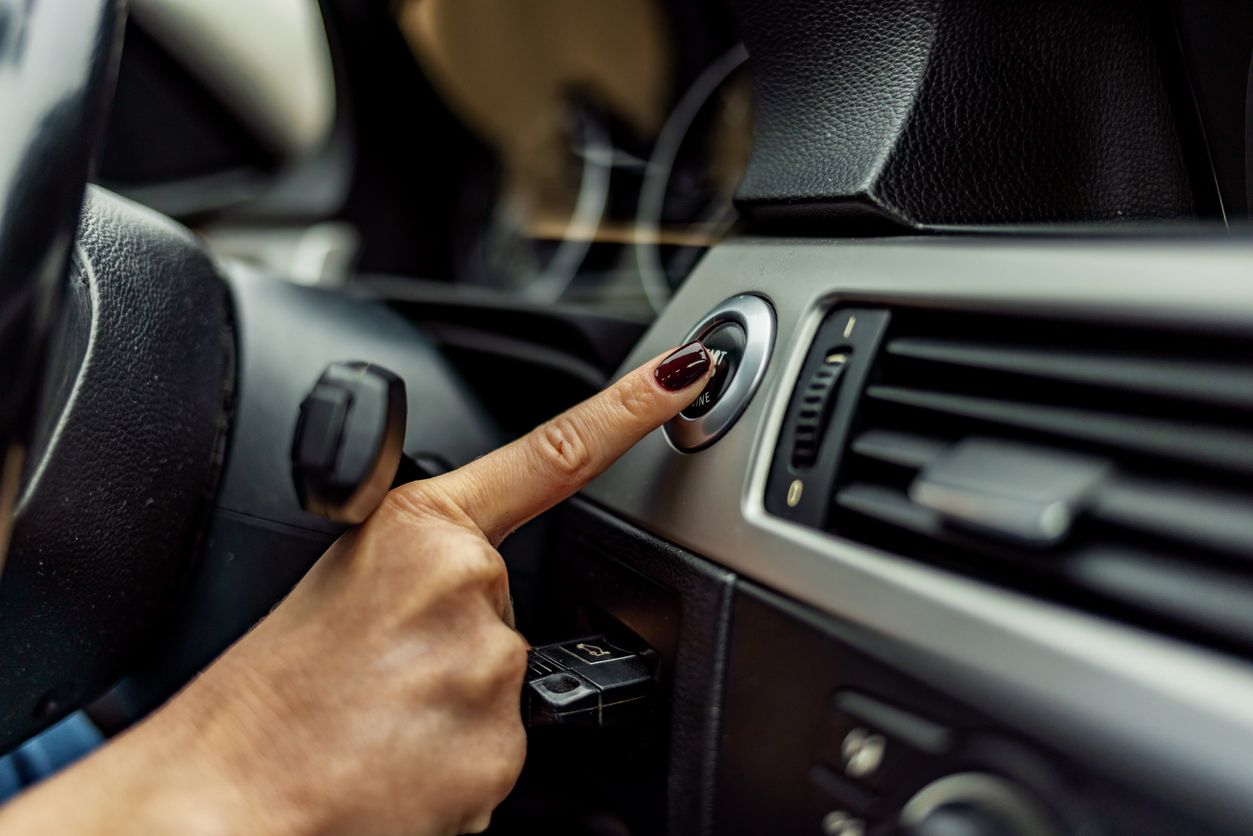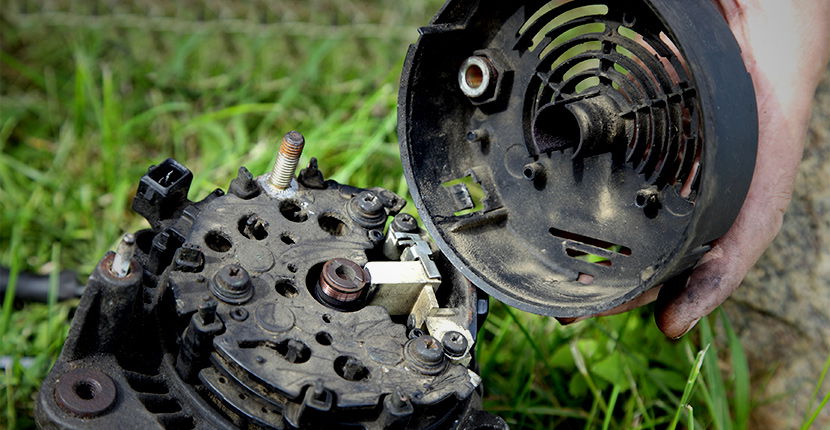A malfunctioning alternator can bring on a host of problems. But how long can you actually drive with a bad alternator before your vehicle gives out? A clear understanding of the role of the alternator in your car’s electrical system is key to answering this question.
This article explores the symptoms of a bad alternator, the risks of driving with one, and how long you can expect your vehicle to run under such circumstances.
See also:
Choosing The Best Flat Tire Sealant
Understanding The Role of The Alternator

Photo Credit: Manuel E Sankitts/Unsplash.
The alternator keeps your car’s battery charged and powers electrical systems while the engine runs. It is a critical component of your car’s electrical system that converts mechanical energy from the crankshaft (via the serpentine belt) into AC electricity, then rectifies it to DC.
In layman terms, the alternator is your car's power plant. It takes spinning motion from the engine (via that rubber belt you can see under the hood) and turns it into electricity—first as AC (like your house uses), then converts it to DC (what your car needs) to charge the battery and run everything electrical while you drive.
Want it even simpler?
It's the thing that keeps your battery alive and powers your lights/radio/AC while the engine's running. No alternator = dead battery = stranded you.
So, the alternator supplies power to various electrical components, including headlights, dashboard instruments, and the radio. Without it, the battery would drain quickly, leaving you stranded. Consequently, a failing alternator causes dim lights, dead batteries, and warning lights—so it’s vital for keeping everything juiced up.
Symptoms Of A Bad Alternator

Recognizing the signs of a failing alternator can prevent you from getting stranded. Here are some common symptoms to watch for:
Dim or Flickering Lights
One of the first signs of a bad alternator is dim or flickering headlights. If the lights brighten as you rev the engine, it’s a strong indication that the alternator isn’t providing enough power.
Warning Light on the Dashboard
Many cars have a dashboard warning light shaped like a battery or labeled “ALT” or “GEN.” If this light comes on, it could mean there’s a problem with the alternator.
Dead Battery
A failing alternator will eventually cause the battery to drain completely. If your battery is constantly dying, the alternator might be the culprit.
Electrical Issues
Other symptoms include issues with power windows, power seats, or the radio. These components may operate sluggishly or not at all if the alternator is failing.
Strange Noises
A bad alternator can cause a whining or grinding noise. This is usually due to a worn-out bearing or pulley.
Can You Drive With A Bad Alternator?

Photo Credit: Warren/Unsplash.
Brutal truth? Yes, you can drive with a bad alternator—but you will get stranded, and soon.
Here’s exactly what happens:
1. Your battery is the only power left. Once it’s drained (usually 20-60 minutes, depending on load), your car shuts off mid-drive—no steering assist, no brakes, no warning. Hope you’re not on a highway.
2. Every mile risk killing the battery for good. A completely dead battery often won’t hold a charge afterward.
3. If it’s just the alternator belt, you might limp it home (if the battery’s fresh). But if the alternator itself is dead? Don’t gamble.
Real-world advice: If the alternator’s toast, call a tow truck. Unless you’re a PANICAN who enjoy roadside panic. In a nutshell, driving with a bad alternator is not recommended, but it can sometimes be necessary. If you must drive, do so with caution and be prepared for the car to stop running.
Here’s what you need to know:
How Long Will A Car Run With A Bad Alternator?

The straight-up answer to this question is that if your alternator is weak but still working, your car might run for a few hours to a couple of days—but it’s a ticking time bomb.
Here’s the deal:
- Symptom #1: Your battery drains overnight (dead in the morning, needs a jump).
- Symptom #2: Lights/electronics flicker or weaken while driving (especially at idle).
- The Endgame: Eventually, the battery won’t hold a charge, and your car dies mid-drive—same as a dead alternator, just slower.
Bottom Line: A "bad but not dead" alternator is like a failing heart—it’ll keep limping along until it suddenly doesn’t. Replace it before you’re stuck. Your car will run 20–60 minutes with a dead alternator—that’s it.
If you’ve got a fresh, healthy battery, you might get an hour (if you turn off everything—lights, radio, AC). If right there is an old/weak battery, your ride could die on you in 20 minutes or less.
Once the battery’s drained, your car SHUTS OFF—no warning, no "limp home." Steering and brakes get heavy, and you’re stranded. No exceptions, no maybes. If the alternator’s dead, you’re on borrowed time. Tow it or fix it—now.
In other words, the length of time a car will run with a bad alternator depends on the condition of the battery and the electrical demands placed on it. A fully charged battery might last for 30 minutes to an hour, but this varies depending on factors such as battery health and usage of electrical components.
Risks Of Driving With A Bad Alternator
At the risk of sounding like a broken record, driving with a bad alternator can lead to a complete loss of power, which is dangerous, especially at high speeds or in heavy traffic. You risk losing power steering, brakes, and headlights, which can create hazardous driving conditions.
See also:
How Rising Living Costs Are Changing Car Maintenance Habits in Australia, the US, and Canada
Steps To Take If You Suspect A Bad Alternator

If you suspect your alternator is failing, it’s important to act promptly. Take these five immediate steps:
Turn Off All Non-Essentials
- Kill the AC, radio, and lights to reduce electrical load and buy time.
Get to a Safe Location
- If driving, head straight home or to a shop—avoid traffic where a sudden stall could be dangerous.
Test Voltage (If Possible)
- Use a multimeter on the battery:
- Engine off: ~12.6V = healthy battery.
- Engine running: Below 13.5V = failing alternator.
Jump-Start (But Know the Limits)
- A jump might get you moving, but if the alternator’s dead, the car will die again once the battery drains.
Tow or Repair—Don’t Gamble
- If confirmed weak/dead, do NOT keep driving. Replace the alternator or call a tow.
In a nutshell:
- A bad alternator won’t fix itself, and pushing it risks:
- Stranding you mid-drive.
- Killing the battery ($150+) or other electronics.
One last thing. If you suspect a bad alternator, you might want to keep a battery charger handy. Yep. A portable battery charger in your car can provide a temporary power boost to get you to a safer location.
Preventing Alternator Failure

We bet you already know the basics: regular inspections, care, and overloading avoidance. We agree: scheduling regular inspections with a trusted mechanic can help with early detection of worn-out belts or bearings, ultimately forestalling alternator failure.
We also agree that a healthy battery reduces the strain on the alternator. So, it’s important to make sure your battery is always charged and replaced when necessary. It also helps to avoid using too many electrical accessories at once, especially if your vehicle is idling.
These basics are good to know, but there are unconventional but smart preventative measures experienced drivers swear can really extend the life of your alternator and avoid unexpected failures. They include:
Rev Your Engine Occasionally (If You Mostly Drive Short Trips)
- Alternators charge best at higher RPMs. If you only do stop-and-go driving, take a 10-minute highway spin every few weeks to give it a proper charging cycle.
Spray Electrical Contact Cleaner on Connections
- Corrosion at the alternator’s terminals or battery cables can cause voltage drop. Once a year, disconnect the battery and clean the alternator’s contacts with electrical cleaner (not water!).
Upgrade to a High-Output Alternator (If You’ve Added Electronics)
- Running extra lights, a sound system, or other aftermarket electronics? A stock alternator may be overworked. A high-output unit prevents premature burnout.
Check Belt Tension with the “Twist Test”
- A loose serpentine belt causes slippage, making the alternator work harder. Press the belt’s longest span—if it twists more than 90 degrees, tighten or replace it.
Bonus tip:
If your battery is old (4+ years), replace it before it dies—a weak battery forces the alternator to overcompensate, shortening its life. These aren’t in the manual, but they’ll keep your alternator alive longer than most cars on the road.
Final Thoughts On How Long You Can Drive With A Bad Alternator
Driving with a bad alternator is a gamble that can leave you stranded at the most inconvenient times. Recognizing the symptoms early and taking prompt action can save you from unexpected breakdowns and costly repairs.
Regular maintenance and being prepared with a backup plan, like a portable battery charger, can help you manage the risks associated with a failing alternator. Remember, the best course of action is always to address the issue as soon as possible and ensure your vehicle is safe to drive.